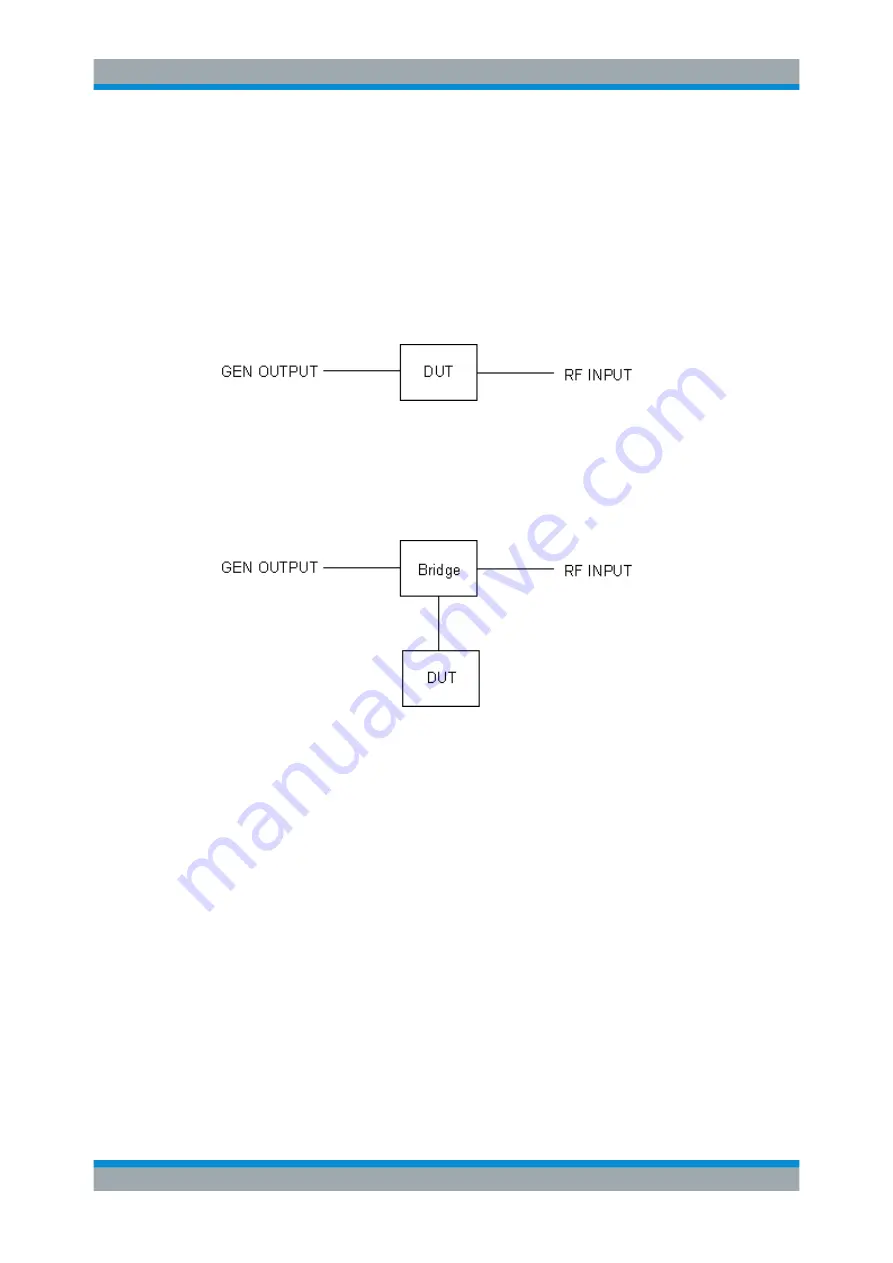
Common Measurement Settings
R&S
®
FSVA3000/ R&S
®
FSV3000
327
User Manual 1178.8520.02 ─ 01
The external generator can be used to calibrate the data source by performing either
transmission or reflection measurements.
Transmission Measurement
This measurement yields the transmission characteristics of a two-port network. The
external generator is used as a signal source. It is connected to the input connector of
the DUT. The input of the R&S
FSV/A is fed from the output of the DUT. A calibration
can be carried out to compensate for the effects of the test setup (e.g. frequency
response of connecting cables).
Figure 8-4: Test setup for transmission measurement
Reflection Measurement
Scalar reflection measurements can be carried out using a reflection-coefficient mea-
surement bridge.
Figure 8-5: Test setup for reflection measurement
Generated signal input
In order to use the functions of the external generator, an appropriate generator must
be connected and configured correctly. In particular, the generator output must be con-
nected to the RF input of the R&S
FSV/A.
External reference frequency
In order to enhance measurement accuracy, a common reference frequency should be
used for both the R&S
FSV/A and the generator. If no independent 10
MHz reference
frequency is available, it is recommended that you connect the reference output of the
generator with the reference input of the R&S
FSV/A and that you enable usage of the
external reference on the R&S
FSV/A via "SETUP" > "Reference" > "External Refer-
ence".
For more information on external references see
Chapter 12.7, "Reference Frequency
Data Input and Output
















































